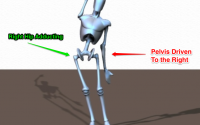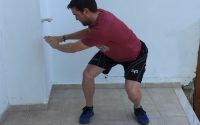Understanding Movement Dysfunction: Speed and Sequencing
Last Monday we talked about the first of the 3 keys to understanding movement dysfunction, ROM dysfunction. Today is the second in the little series about movement dysfunction. I’m hoping to get through Speed dysfunction and Sequencing today.
Movement Speed Dysfunction
This is actually the one I think about the least, I’m not sure why, I don’t think it is any less important! It’s just on my mind less for some reason.
The problem is one of too much speed. It could be either a structural or postural reason a joint is going too fast through it’s range. Either way it makes it very difficult for the motion to be decelerated, stabilised and reversed. This is bit over an over-simplification, however, for me it makes sense to think in this simple framework.
As an example, if the foot is structured in such a way as to cause excessive speed towards a pronated position e.g. forefoot varus. If the speed is excessive to the point that dysfunction occurs, the foot may not be able to supinate. This of course has many consequences both locally and globally.
Locally, the foot will remain in a pronated position, the mid tarsal joint will be ‘unlocked’. This is a problem as during supination the foot needs to be locked to push off.
Globally, it will result in a very poor loading in the second phase of gait. The knock on affect of this is that you will not get a powerful push off (pull off) from the back foot in gait.
The root causes of this dysfunction can be pretty varied. Anatomical foot dysfunctions are probably the most likely candidate. Though I wouldn’t rule out laxity from repeated injuries or decreased tone/response from the muscles causing them to delay in their firing…it is individual to the patient.
Movement Sequencing Dysfunction
This is one I seem to be thinking about almost constantly. It’s absolutely vital for the maximum success of movement that the sequencing is correct. The ‘kinetic flow’ through the body can only be continued to a successful conclusion if the sequencing is correct.
The best way for you to see this in action is by watching videos of big, whole body movements like the golf swing or tennis serve or throwing. Here’s a few I like:
Tennis Serve
In this one you can see Djokovic serving, it’s a great slow motion video and you can really see the sequencing. See how the legs load and explode before the arm. This allows the explode of the lower body to enhance the load of the upper body.
Golf Swing
In this one you can see Tiger Woods taking a swing at a golf ball. If you watch you can see that the sequencing requires that the hips begin the forward motion (explode) before the arms have completed the backswing. Like in the tennis serve this allows the lower body to help load the trunk and upper body. Generally speaking, if this sequence is out of sync and the hands initiate the forward swing the swing will be lacking power and consistency.
Though this is a global example you can bring this all the way down to the sequencing of joints or even planes of motion at a single joint. It’s incredible the difference you can make by altering the sequence of bone motions at a joint.
Summary
Range of motion, speed and sequencing though talked about separately are obviously linked. There is no way to say it is purely one or another. One may be the key influence, but there will be a knock on effect to the others. Speed may alter the ROM used as well and alter the sequencing of bone motions at the joint.
The importance of these is that if understood you can take advantage of it in both assessment and treatment. If you are aware of the ROM, speed and sequencing while you are watching movement you can get closer to the root cause of the movement dysfunction. This can then influence the selection of treatment strategies. If you can identify the root cause you are more likely to get the result you are after.
Physioblogger
Related Articles
Understanding Movement Dysfunction

